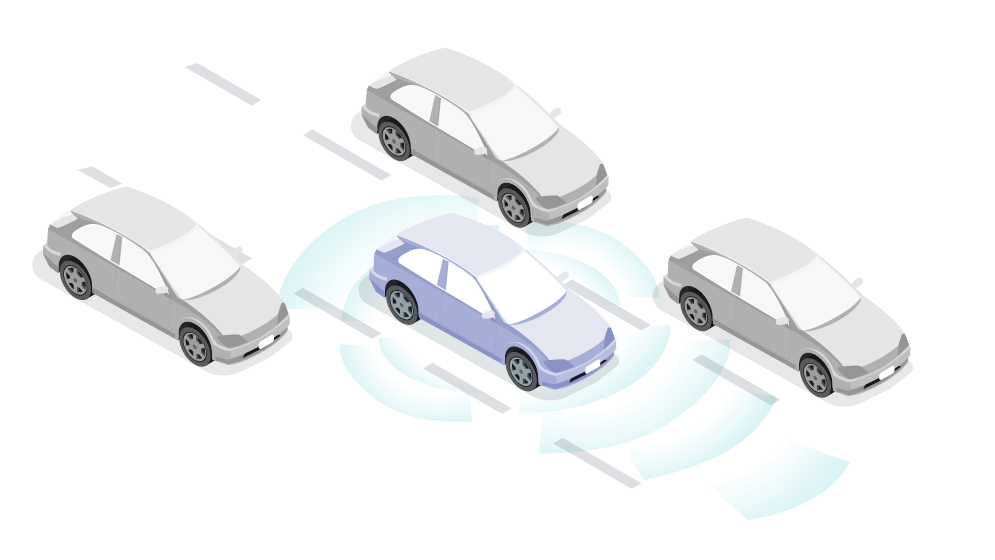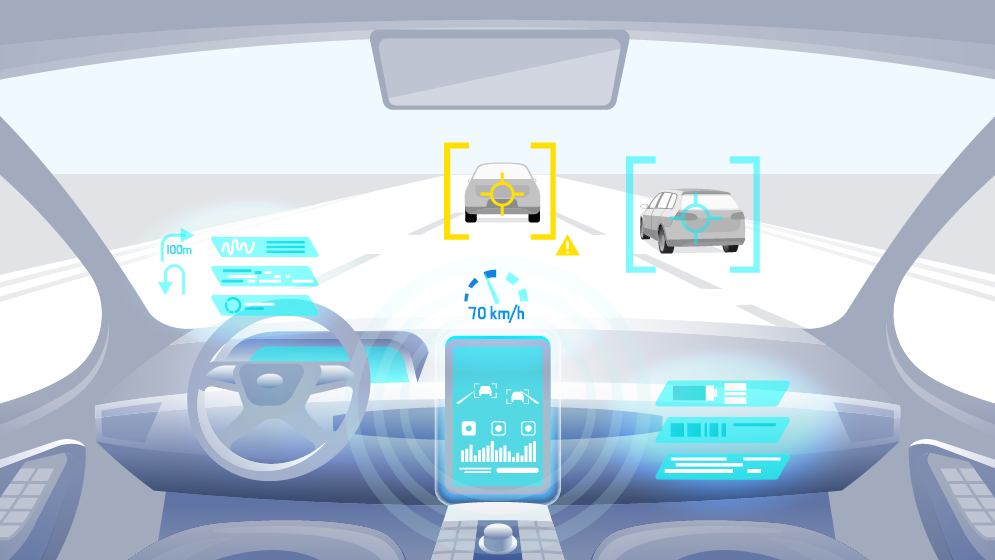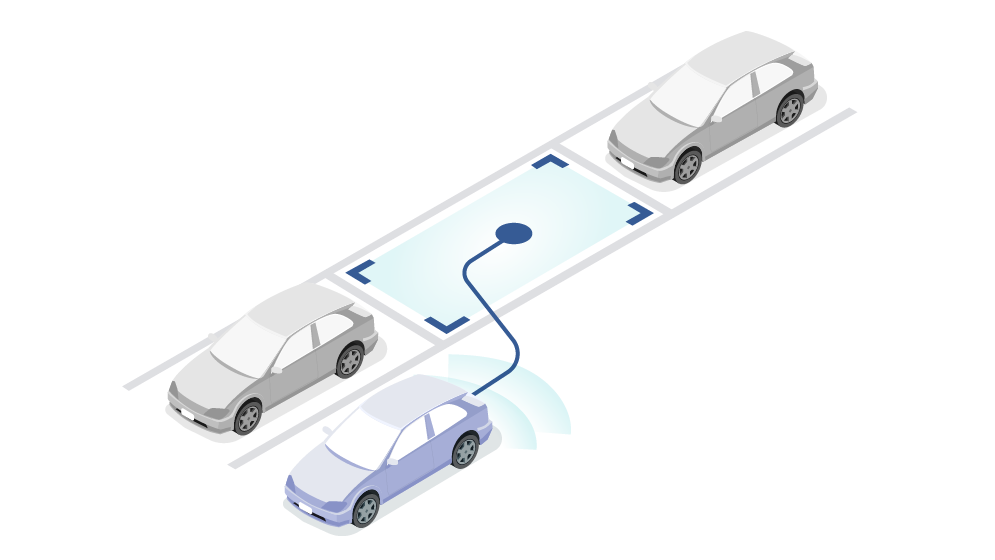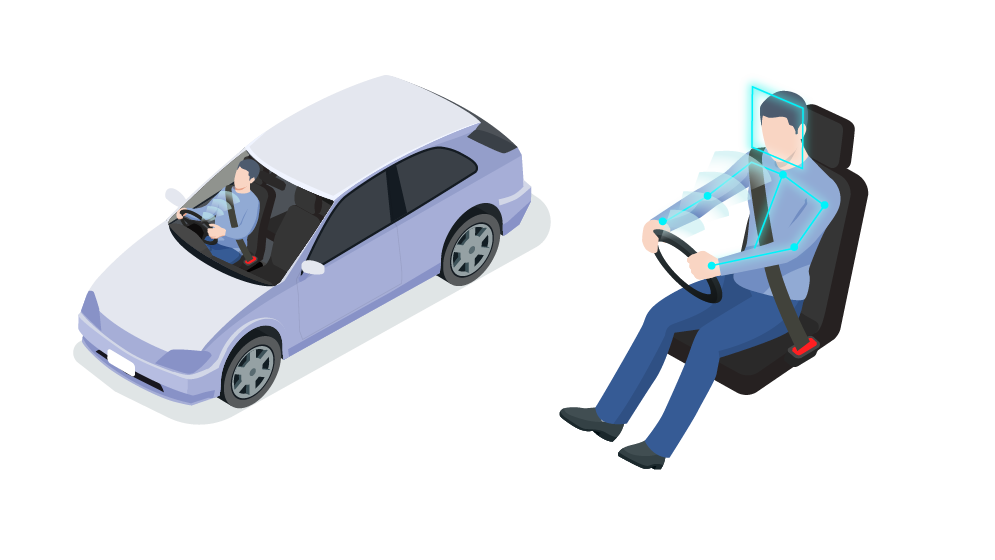Automotive Camera/LiDAR
- Home
- Applications
- Automotive
- Automotive Camera/LiDAR
Overview
For realizing a sustainable mobility society, sophistication and automation of vehicles are in progress such as improved safety of mobility by vehicles, reduction of environmental impact in transportation and an improved degree of freedom of mobility. At the same time, sensors that function as “eyes of vehicles” for enabling automotive systems to monitor the peripheral conditions and grasp the presence of obstacles, which were previously done by the driver, and additionally grasp the conditions in the cabin have now become essential to vehicles.
As a leading company of imaging & sensing solutions, Sony Semiconductor Solutions Corporation(SSS) focuses on the development and commercialization of automotive sensors and related solutions toward a society that realizes safe and sustainable mobility.

Applications
Advanced Driver Assistance System (ADAS)
Advanced Driver Assistance System (ADAS) is a generic name for a function such as automatic braking for preventing collisions by vehicles and lane departure prevention assistance and parking assistance that support the driver’s driving operations. Unlike the functions for mitigating damage caused by collisions such as seatbelts and air bags, Advanced Driver Assistance Systems are intended for preventing accidents.
Recent vehicles are provided with Advanced Driver Assistance Systems as the standard equipment and their functions are becoming increasingly enhanced and the capabilities sophisticated year by year. Components that are essential to the realization and performance improvement of Advanced Driver Assistance Systems include image sensors, LiDAR and automotive sensor called Millimeter Wave radar. Advanced Driver Assistance Systems use these sensors to grasp the conditions in the periphery of the vehicle and state of the driver, which facilitates control of driving operations and warning to the driver.
SSS's image sensors for automotive use and SPAD depth sensor for automotive LiDAR applications can be used as components of Advanced Driver Assistance Systems for providing accurate periphery monitoring and cabin monitoring to contribute to prevention of vehicle accidents.

Automated Driving
In automated driving, processes such as “Sense,” “Plan” and “Act,” which are conducted by the driver, are carried out by machines (automated driving system).
Because of the different technologies required for an automated driving system depending on the surrounding traffic conditions and road environment, the degree of automation is classified into six levels from Level 0 to Level 5. While the realization of Level 5 (Full Driving Automation) with no driving restrictions will have to wait for the future, Level 3 (Conditional Driving Automation) where the system performs periphery monitoring and operation under the specified conditions and Level 4 (High Driving Automation) are in the practical application phase.
Spread of automated driving vehicles will lead to social issue solution-oriented values essential to creating a sustainable society, such as reduction of traffic accidents, mitigation of traffic congestion and reduction of greenhouse gas emissions and other environmental impact, and also values brought by them such as reduction of economic losses, decrease in transportation costs, solution of driver and other labor shortages and provision of means of transportation for vulnerable road users. In addition, it will enable diversification of transportation by releasing drivers from risky long-time driving, allowing travel time to be effectively used through utilization of time for traveling for purposes other than driving, and so on.
For realizing an advanced automated driving system, it is imperative to provide sensors with the capabilities for accurately grasping the environment outside the vehicle such as obstacles and other vehicles. SSS is developing sensing solutions that offer high recognition ability and safety in order to accelerate social implementation of automated driving that contributes to creating a sustainable society.

Parking assistance system
A parking assistance system is a system that supports the driver in parking operation from the perspective of the periphery environment recognition and vehicle control such as automatic parking control by operation of just one button. The sensors provided in the vehicle are used for grasping the conditions around the vehicle and the system automatically performs the operation required for parking. This mitigates the burden of quickly turning the steering wheel in environments such as parking in a small space and parallel parking on the road, which greatly strain the driver, and of peripheral monitoring performed at the same time. This allows reduction of the time required for parking in addition to prevention of collisions.
In recent years, linking with smartphones and other means are increasing usability and future progress of automation is expected to realize the functions of summoning a vehicle from the parking location to where the driver is and of automatically moving a vehicle from where the driver got off to the predefined location for parking.
To parking assistance systems, sensing technologies for grasping the parking space and obstacles in the periphery are indispensable. By providing and utilizing sensing solutions of SSS, parking convenience and safety can be improved as in reduction of burden on the driver in parking and prevention of collisions.

Driver monitoring
Drivers’ looking aside, being distracted, dozing off, etc. can be recognized to alert the drivers according to the conditions and, in addition, control such as automatic deceleration and stopping of vehicles can be provided for reducing vehicle accidents.
The function of monitoring the state of the driver for that purpose is driver monitoring. While there are various methods of monitoring, sensors that recognize the driver’s line of sight, face direction, seating position and driving posture are raising especially high expectations as an effective solution.
SSS’s ToF image sensors are capable of closely tracking not only the face direction and position but also head and limb movements of the driver, helping to realize highly accurate monitoring. In that way, they contribute to prevention of the driver’s dozing off and safe driving.

Related Products & Solutions
-
Image Sensor
Image Sensor for Automotive Use
Find out more about image sensors for automotive use.
-
Image Sensor for Automotive Use
High Dynamic Range (HDR) Technology for Automotive Use
Find out more about High Dynamic Range (HDR) technology for automotive use.
-
Image Sensor for Automotive Use
LED Flicker Mitigation Technology for Automotive Use
Find out more about LED flicker mitigation technology for automotive use.
Contact Us
For inquiries about Sony Semiconductor Solutions Group and products / solutions, specifications, quotation / purchase requests, etc., please contact us using the Inquiry form from the button below.